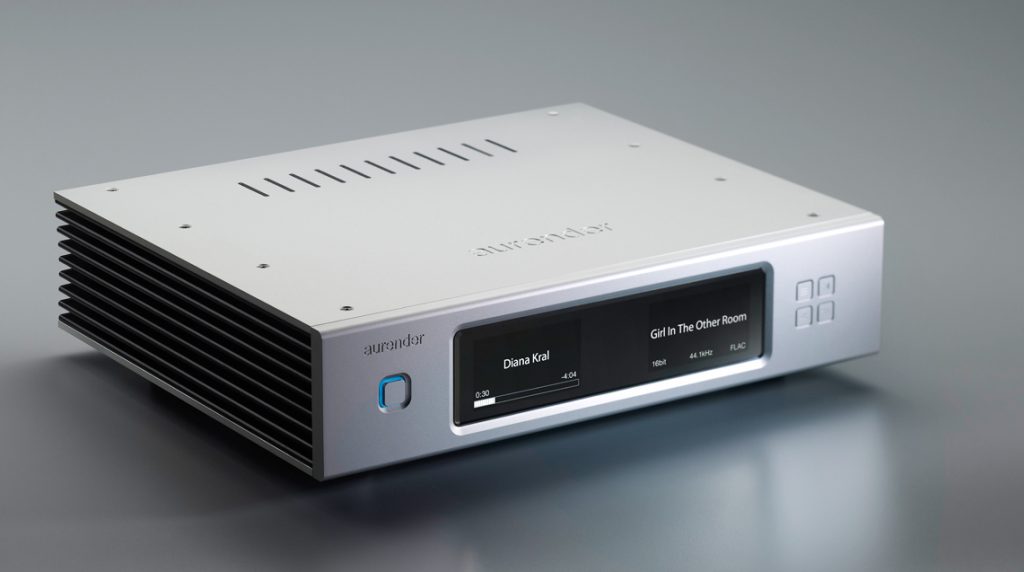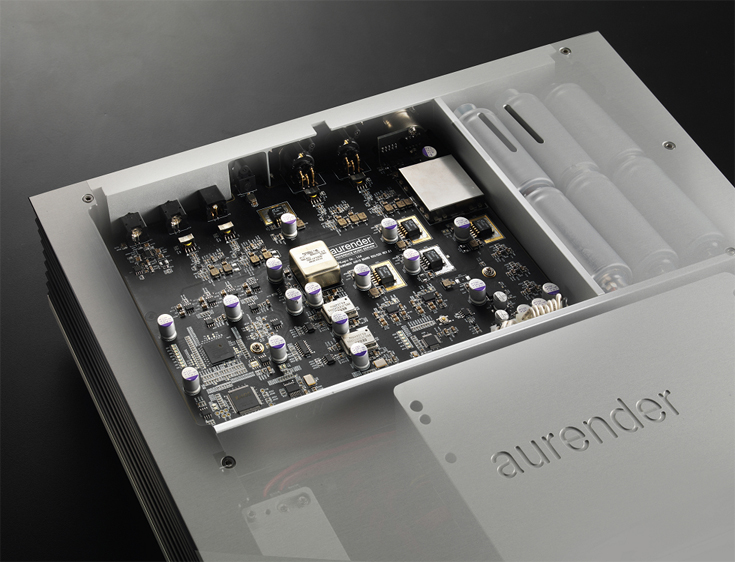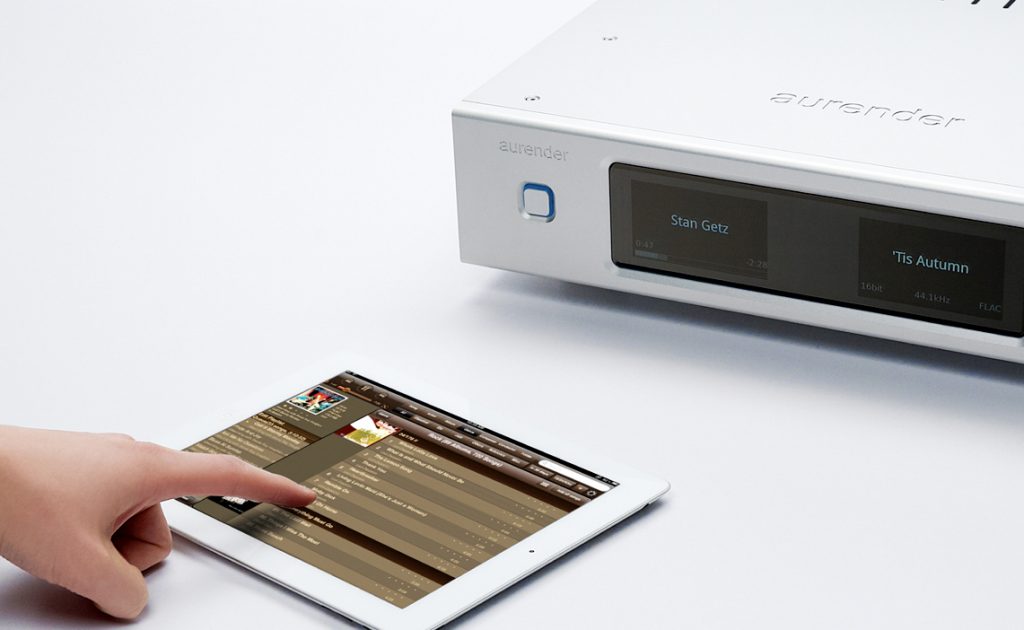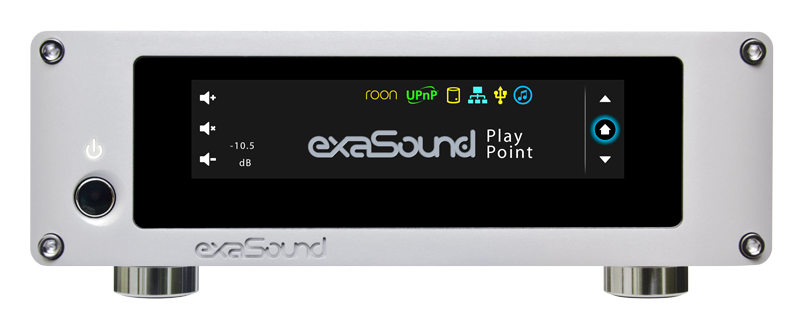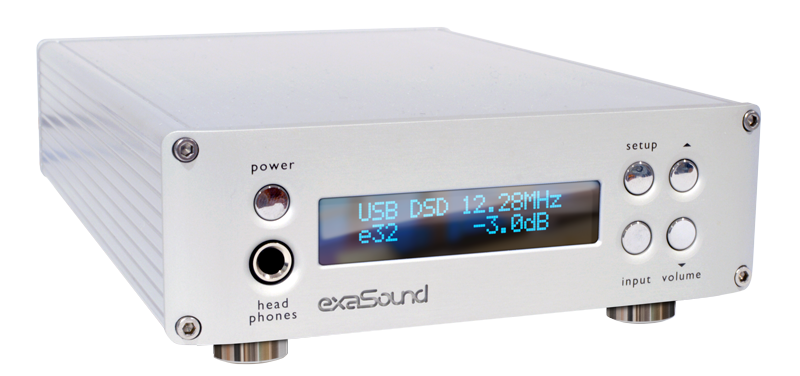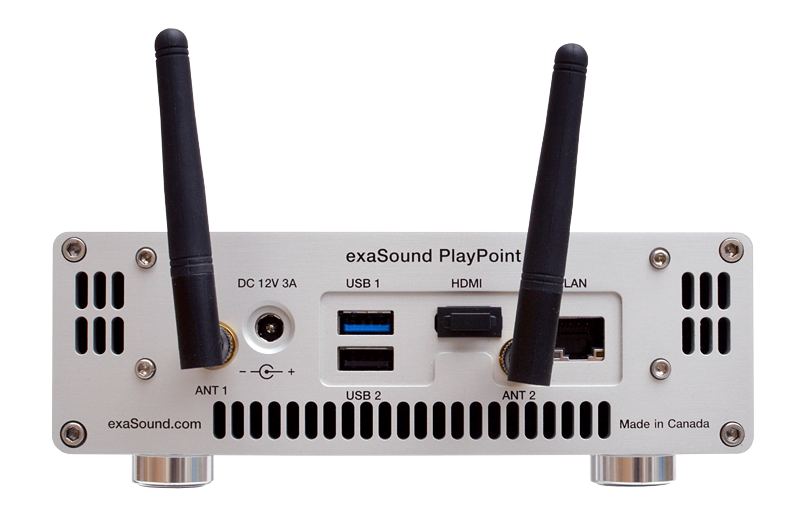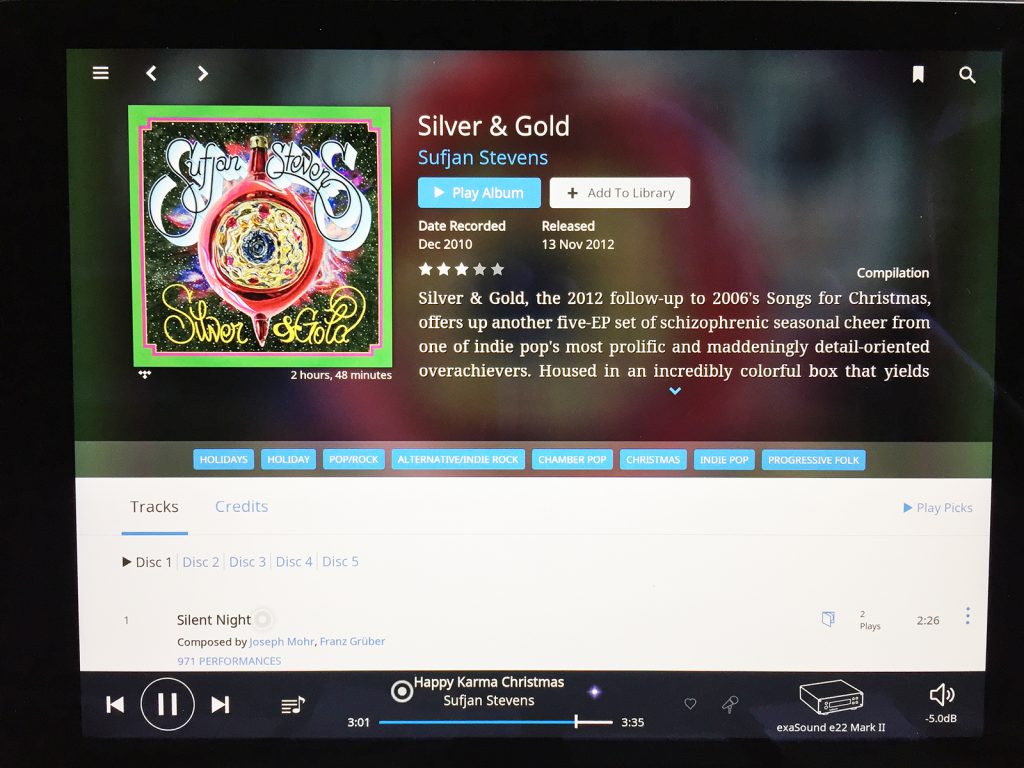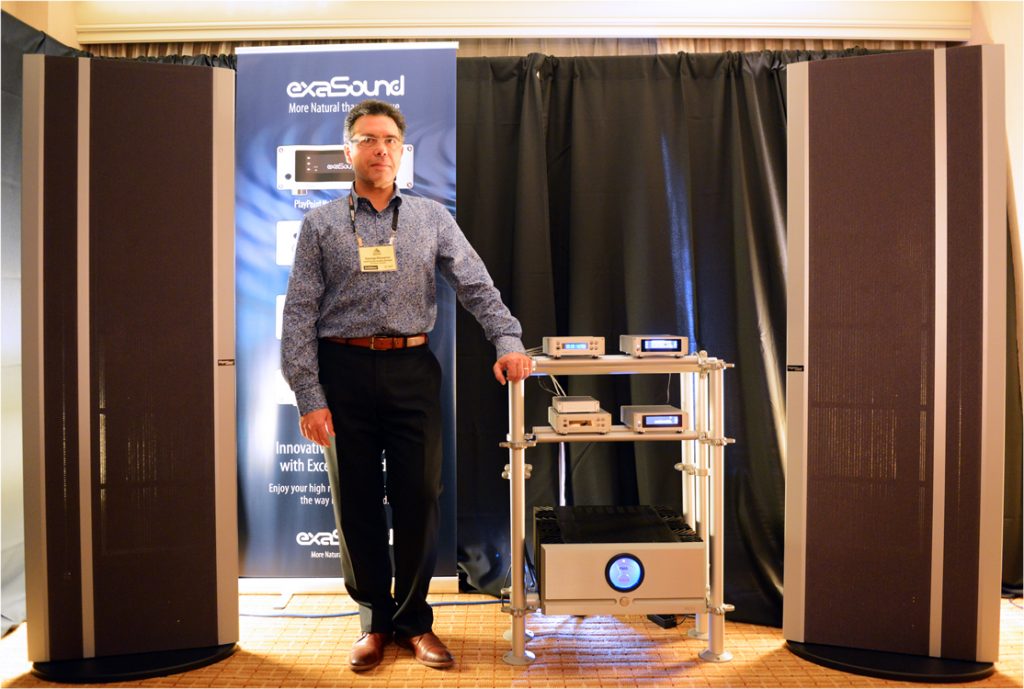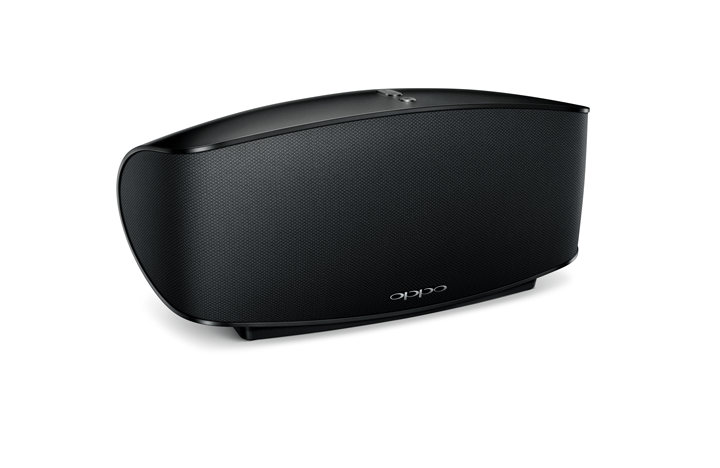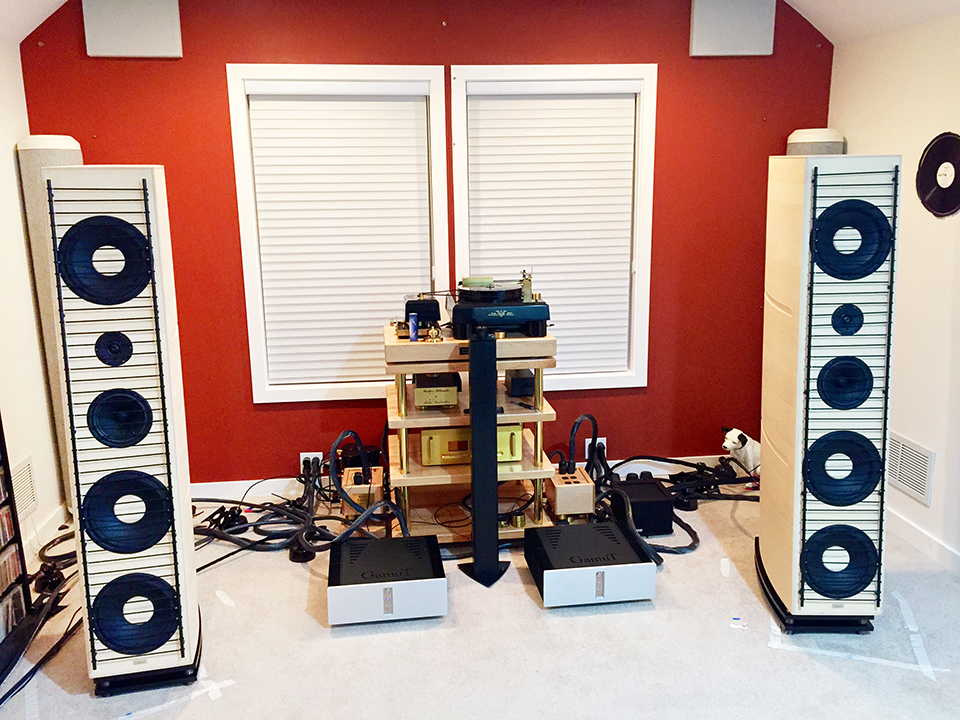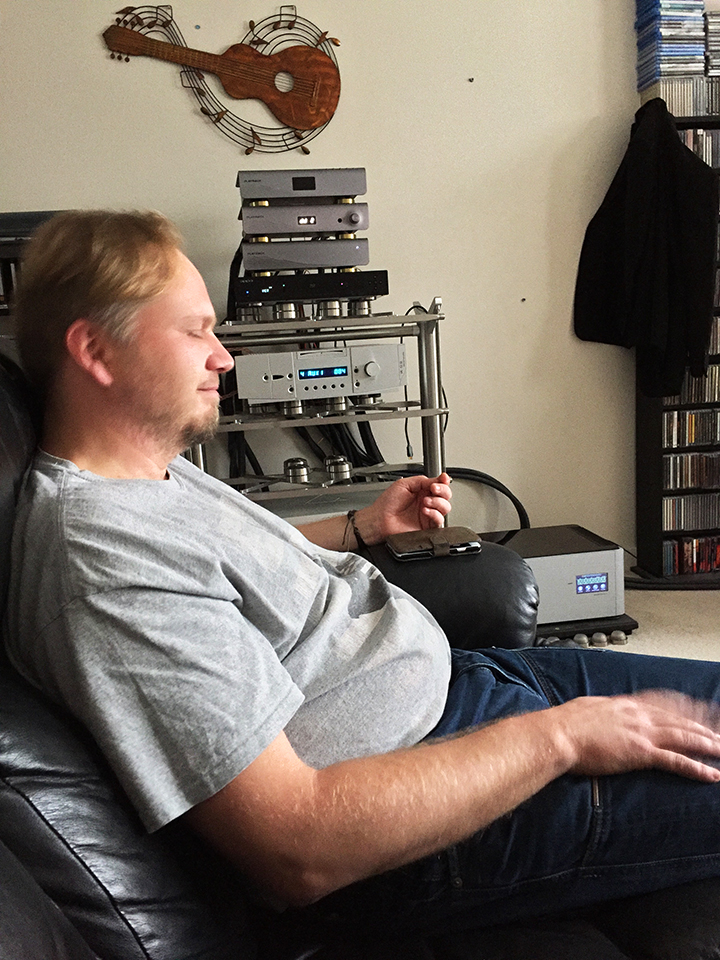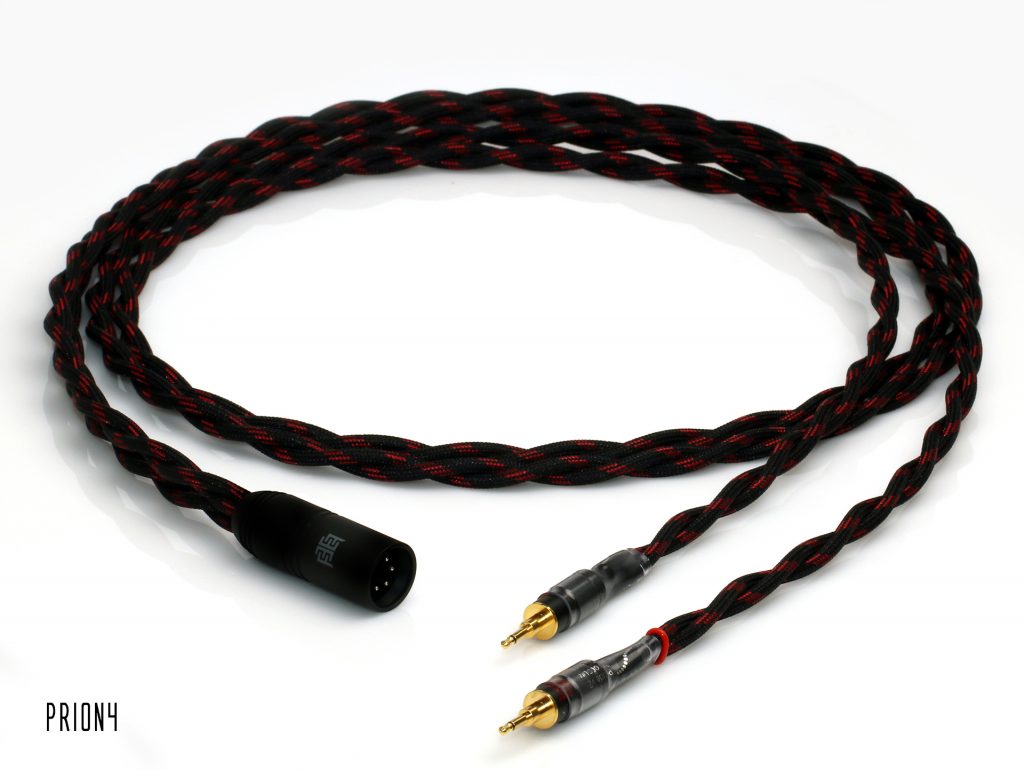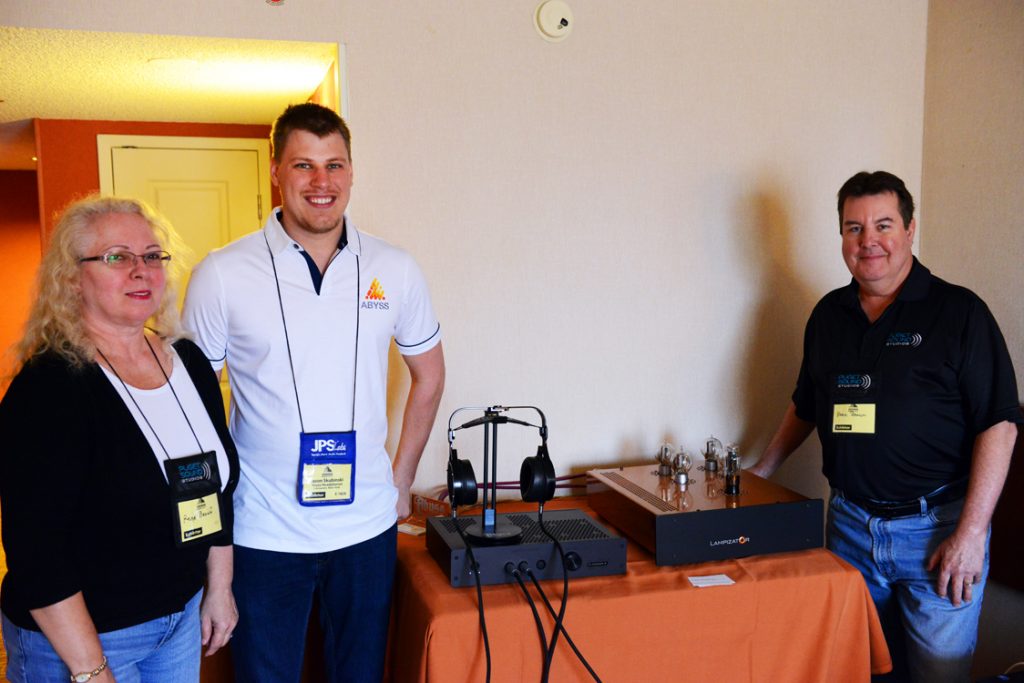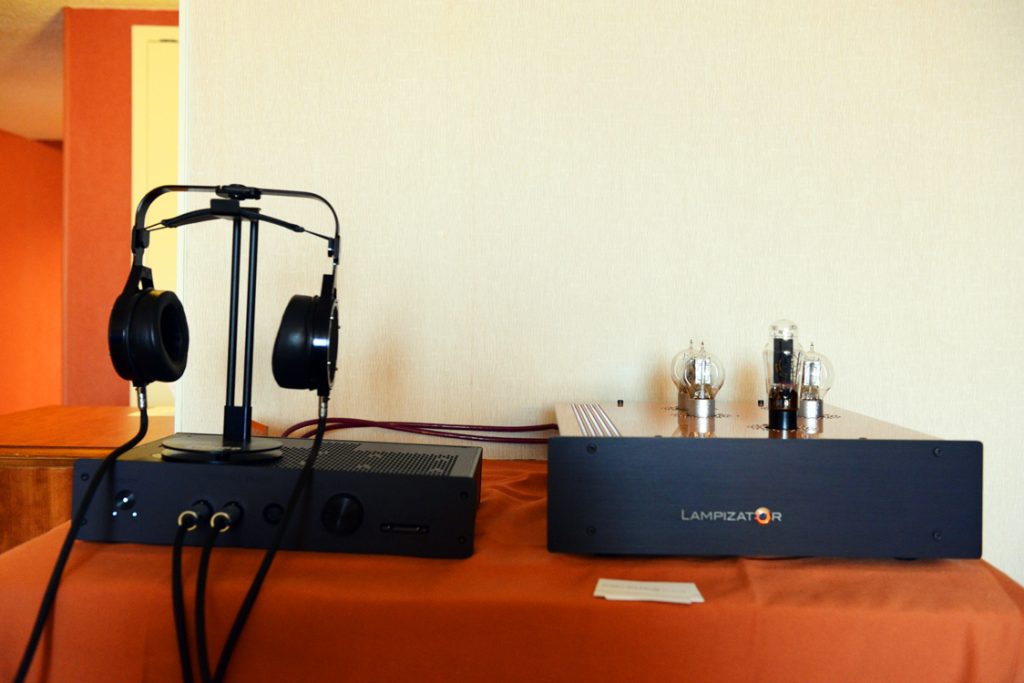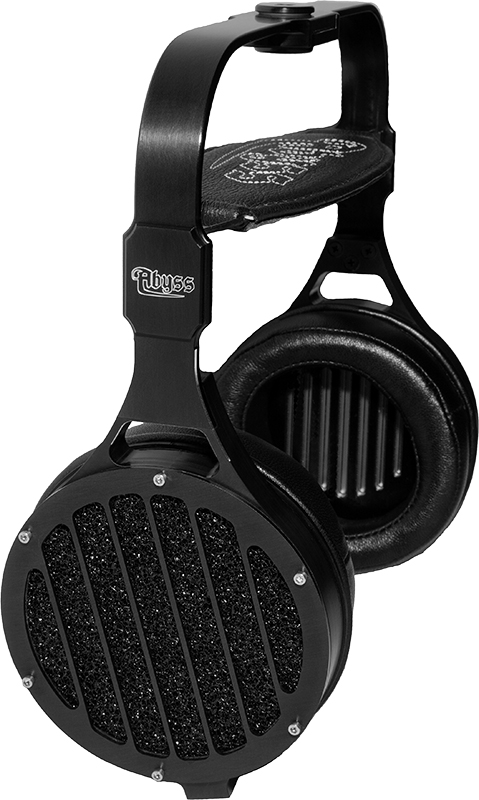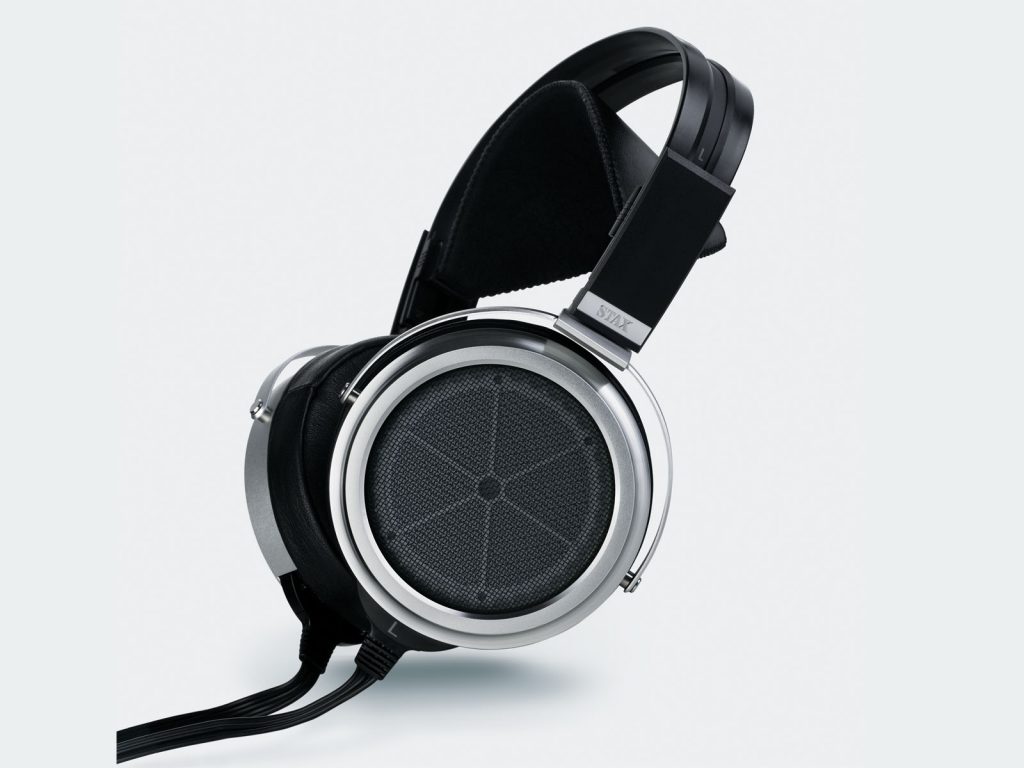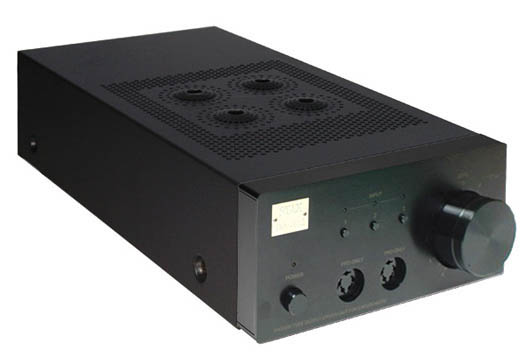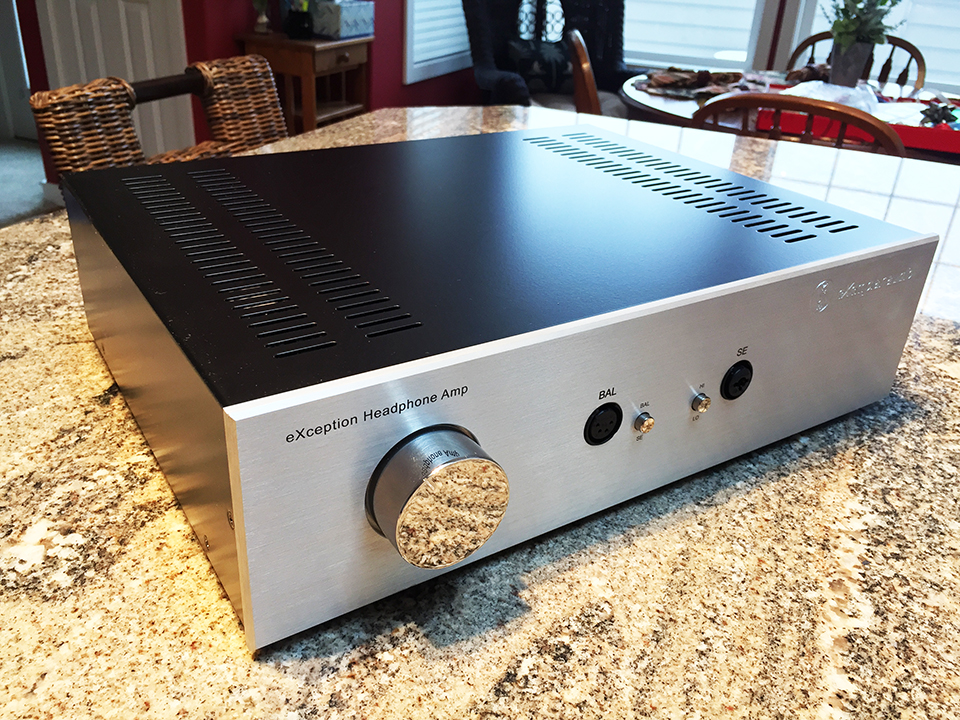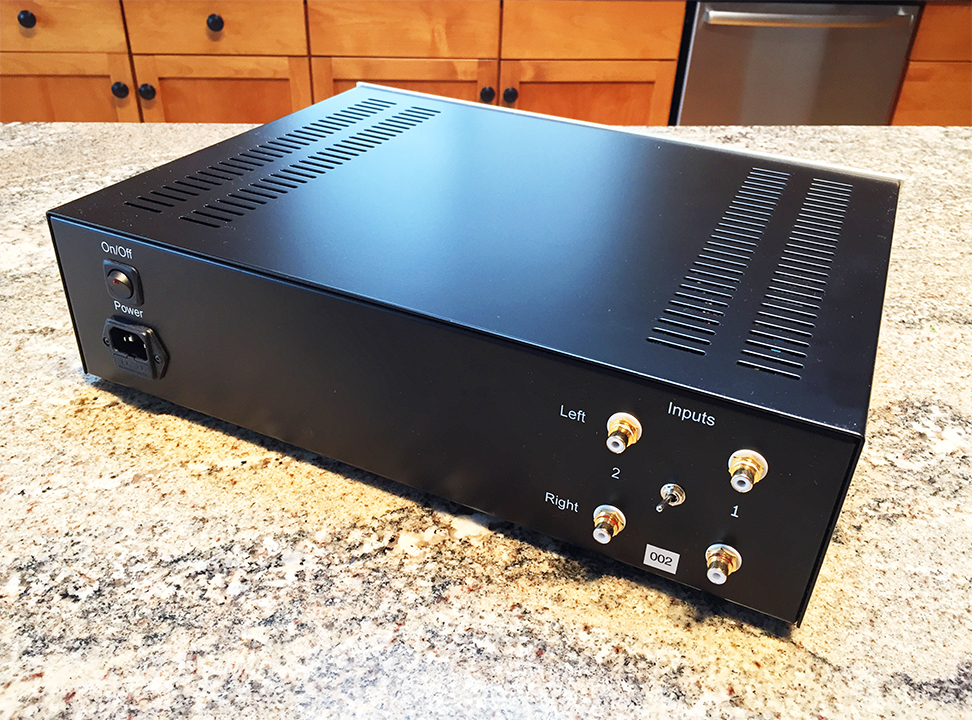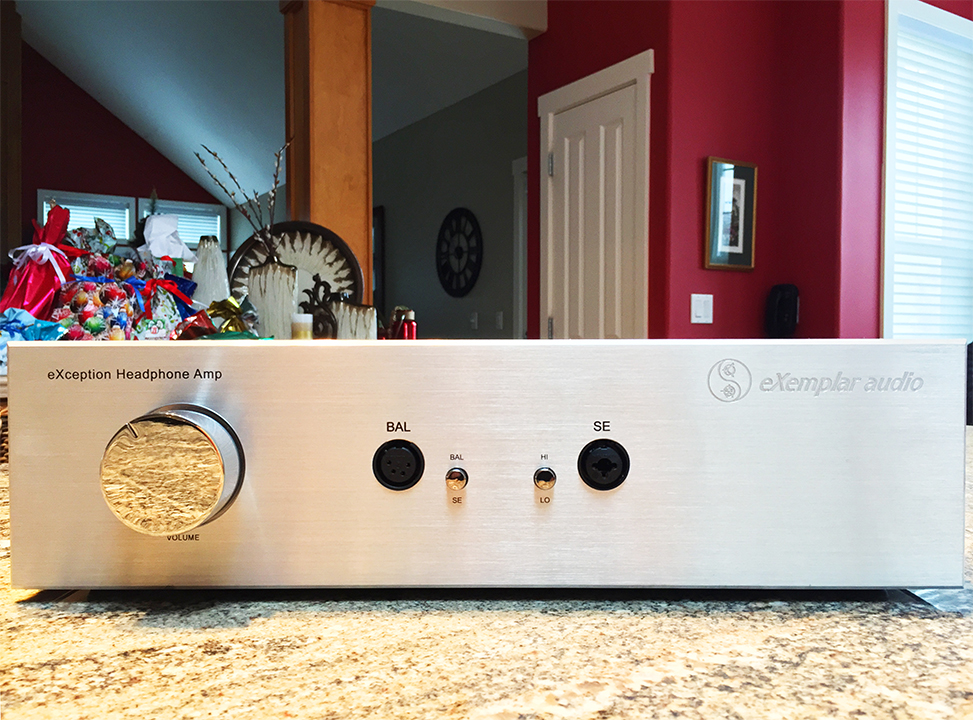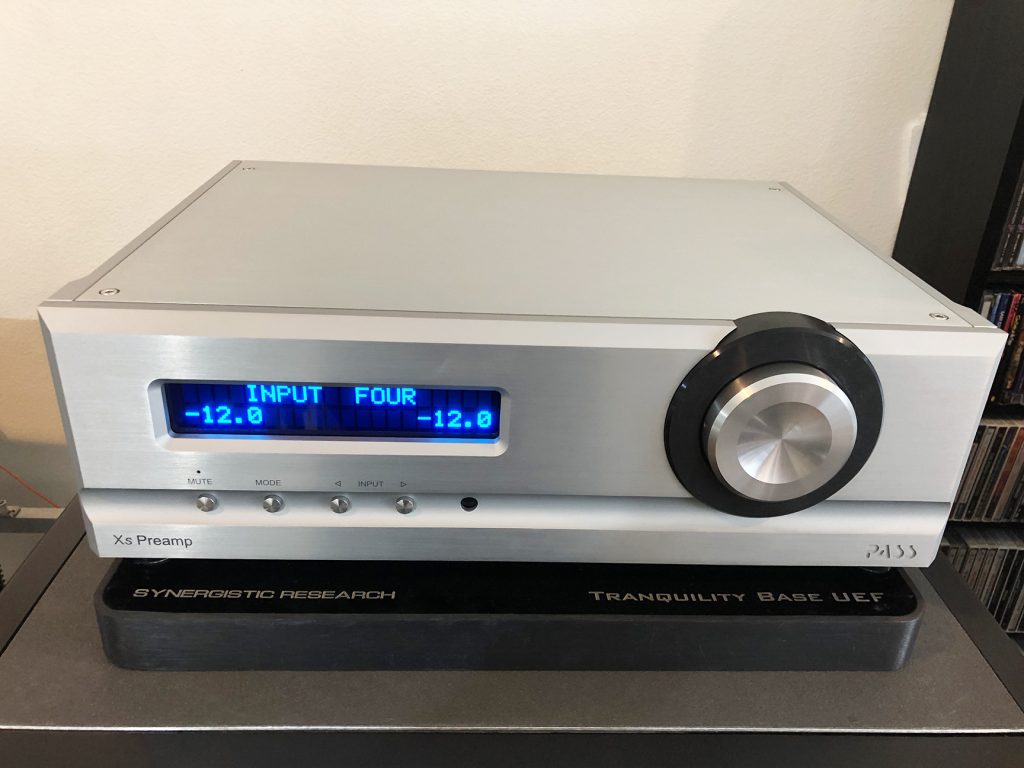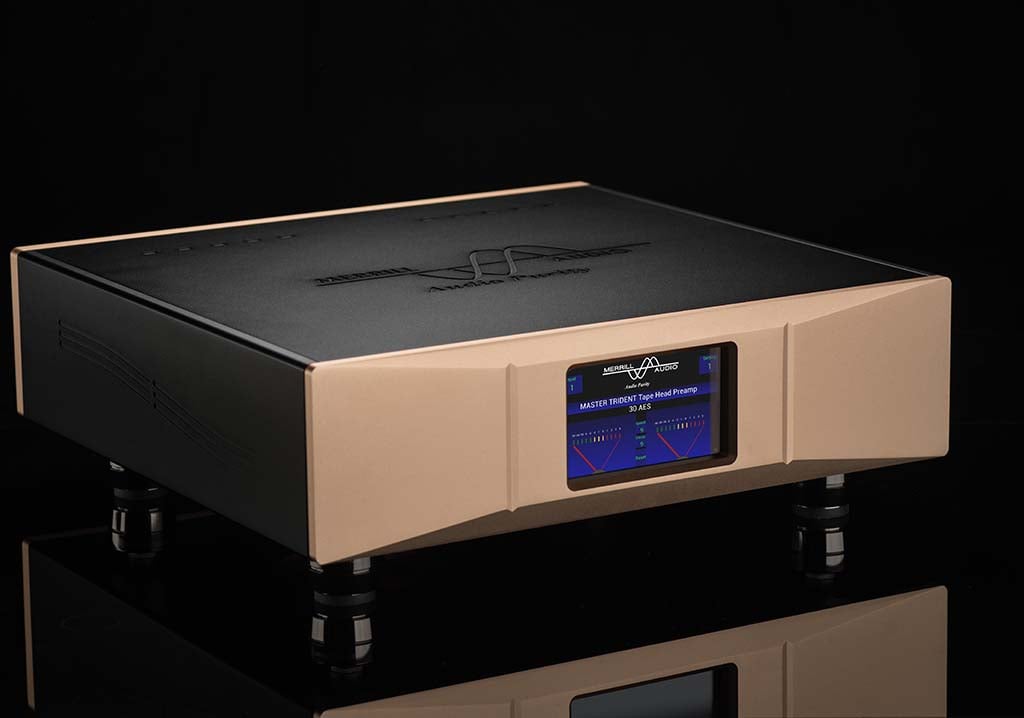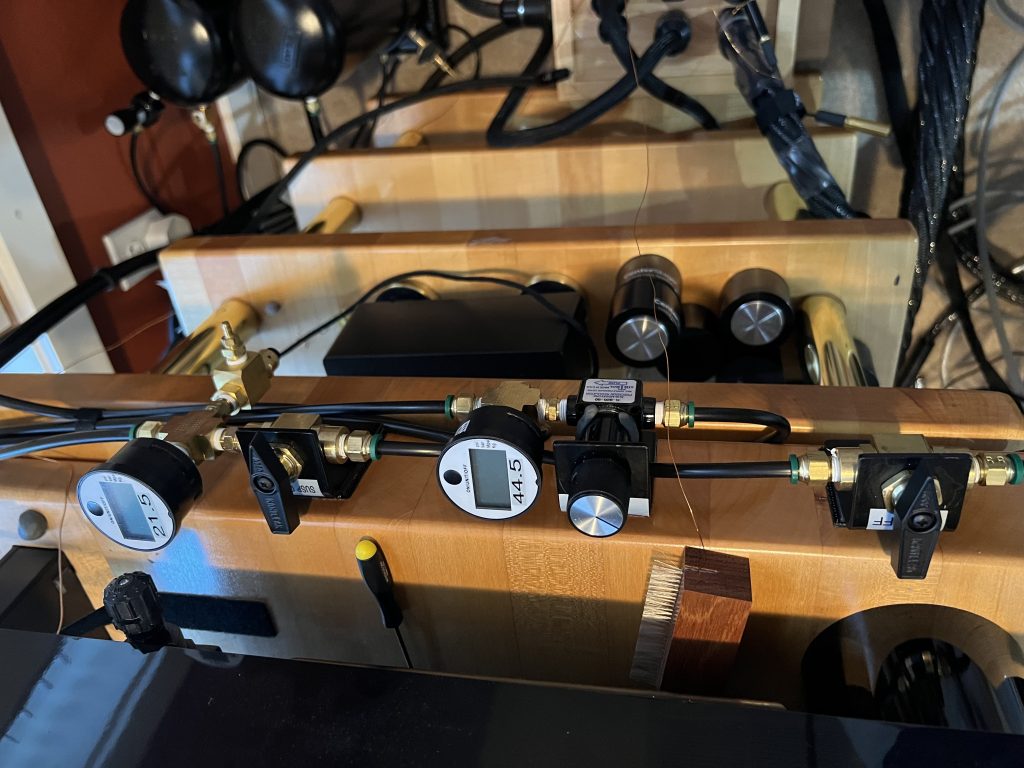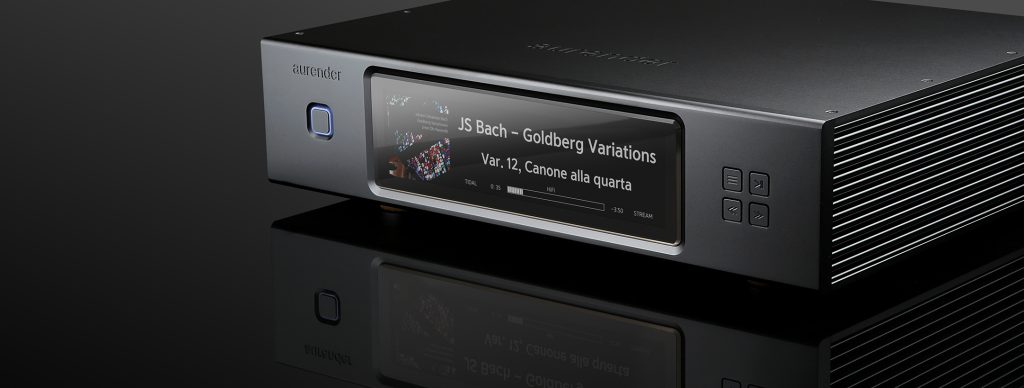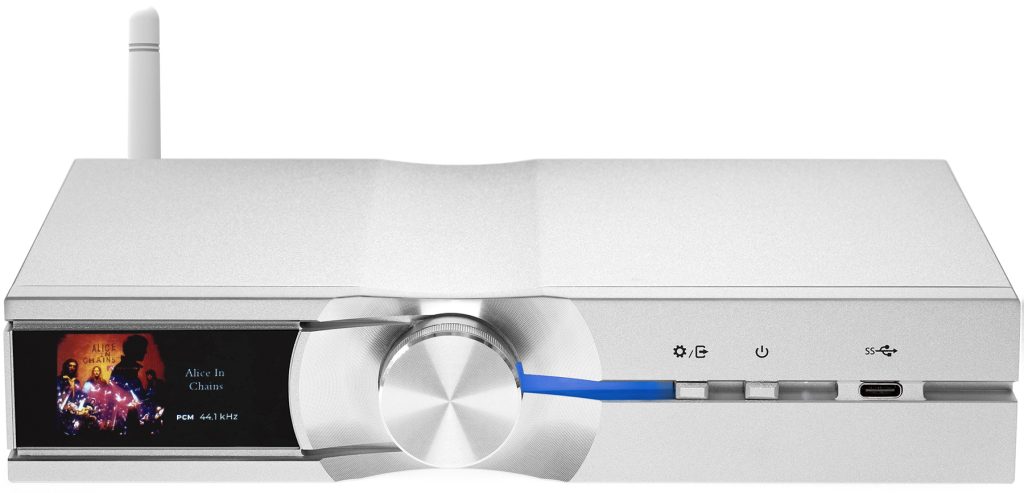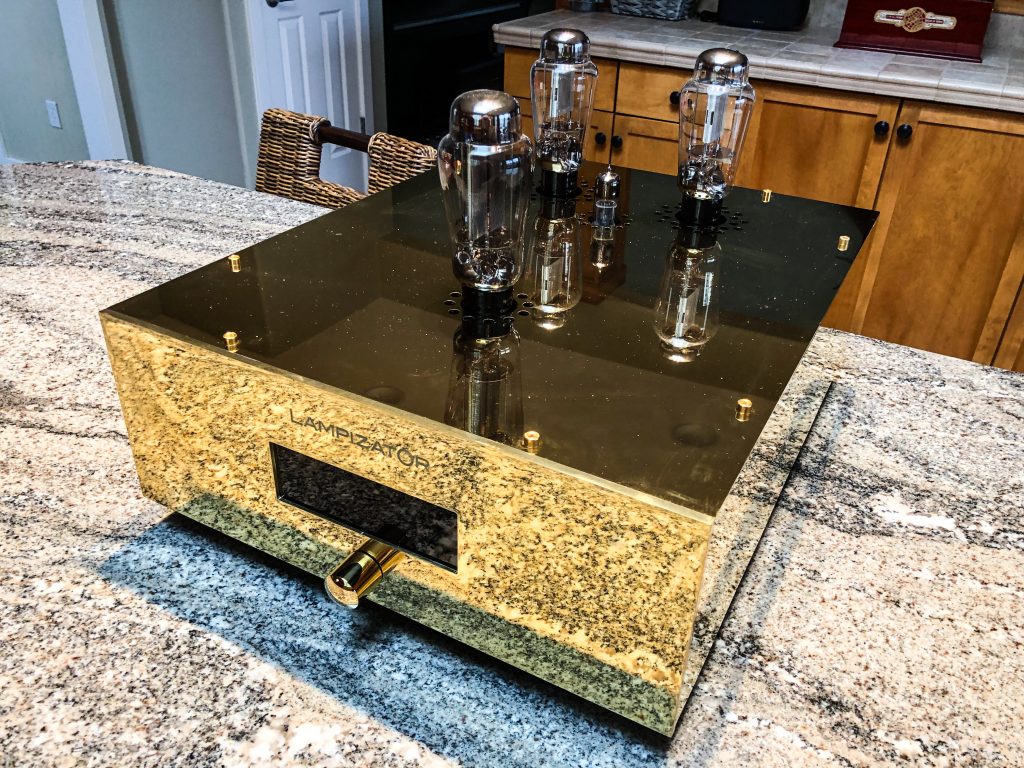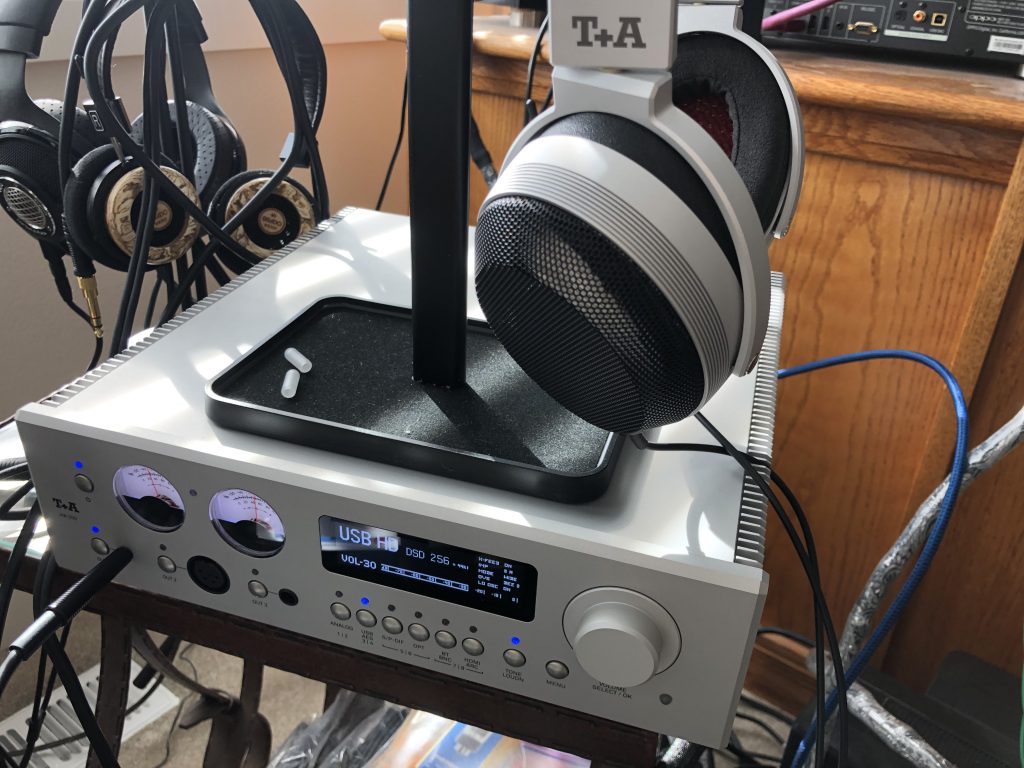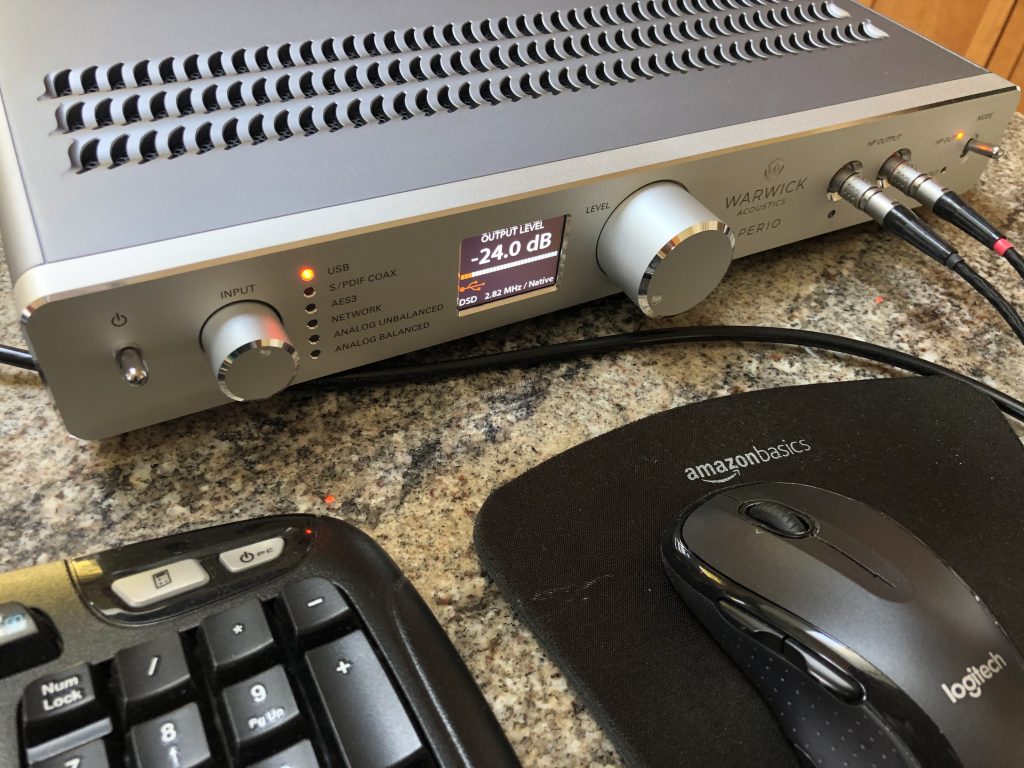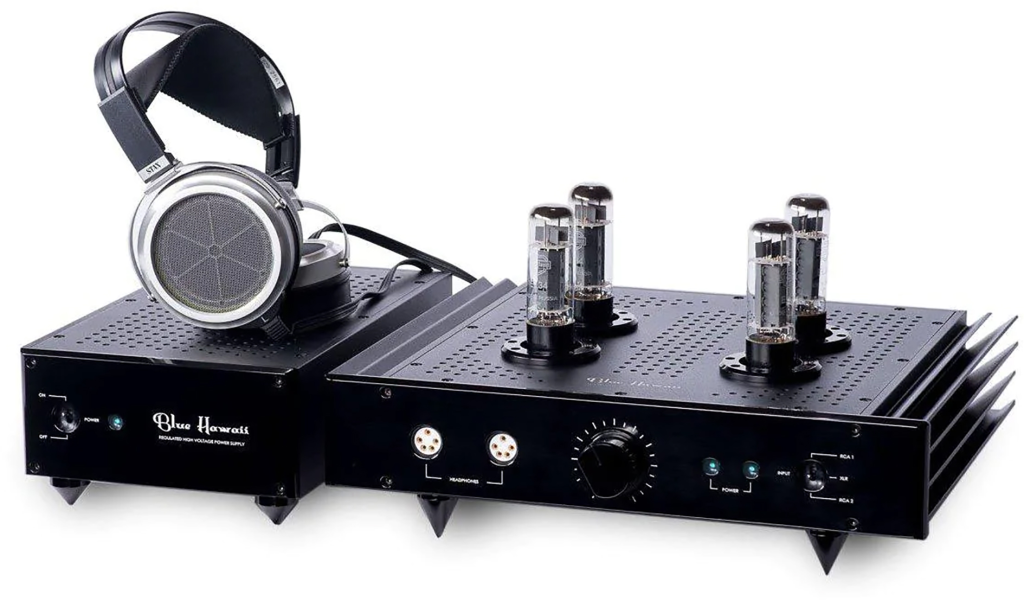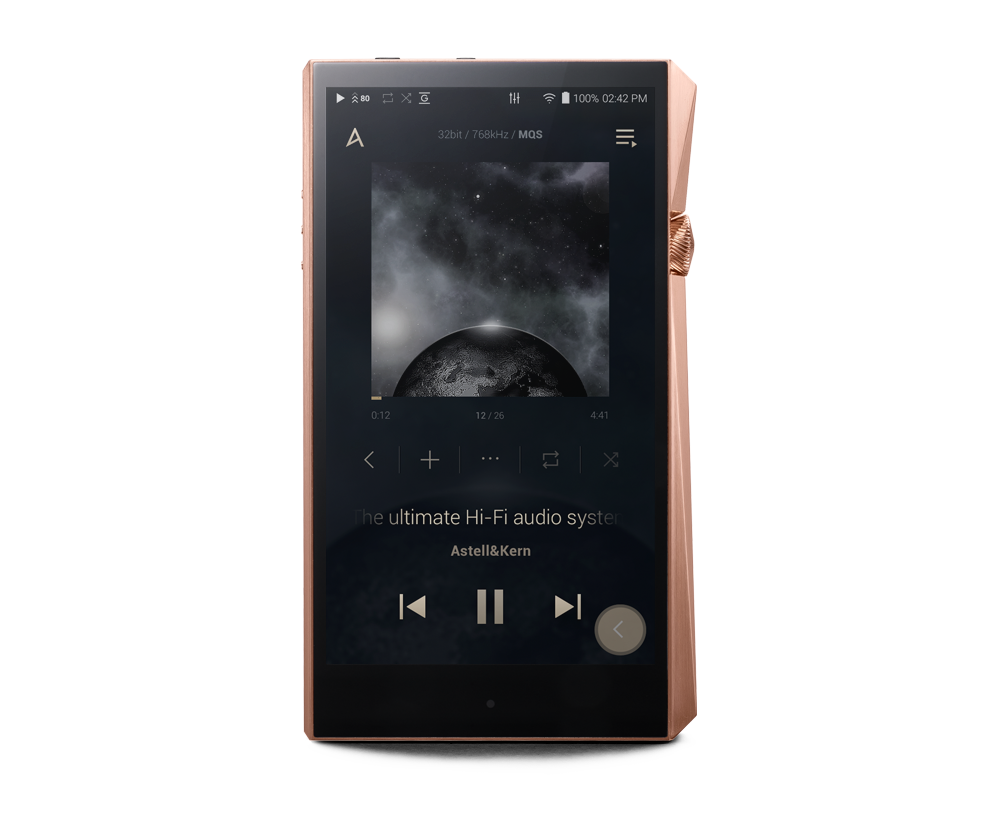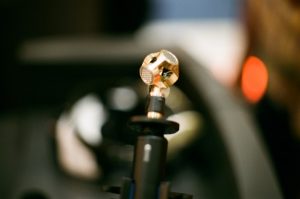Herewith is Impressions: Robinson's Brutus Awards for 2016, Part The Third. Part The First can be found HERE and Part The Second HERE. There will be a fourth installment to cover this busiest of years...stay tuned!
All photographs are courtesy of their respective companies, unless otherwise noted.
Aurender W-20 Music Server
The Aurender W-20 Reference Music Server, a technological wonder!
Aurender's W-20 is their ne plus ultra assault on the possibilities of LAN-based music storage and serving. Featuring 2 x 6 TB hard drives for 12 TB of storage (HUGE!), plus a 240 GB solid-state drive (SSD) as a cache…choice, that...the W-20 is a formidable music server and state-of-the-art implementation of a list of technically sweet features.
Among them are three sets of internal battery banks, two which alternatively charge-and-discharge, back and forth, while the third acts as a battery backup (BBU) for safe shutdowns in the case of a complete loss of external power.
The hard drive subsystem is heavily built and shielded from shock/vibration. Extreme power supply regulation…exceptional USB 2.0 implementation…ultra-low jitter rates…support for multiple audio formats, including Single and Double DSD (not Quad DSD yet, however, the single drawback that I see)…multiple-look front displays…and the exceptional Aurender Conductor control interface application for tablets like my iPad Air 2.
For a complete list of features, visit the Aurender W-20 page. For an information technology person like me, this is how to do a music server right. Very cool.
What's not to like?
I received a review sample of the W-20, and have put it through its paces in 2016. This was done in conjunction with the Playback Designs IPS-3 Integrated Amplifier with integrated Quad DSD DAC (though used only up to Double DSD, given the W-20's lack of support for Quad DSD). The IPS-3 was immediately recognized by the W-20 during setup…no surprise, since Andreas Koch did some consulting with Aurender during the development of the W-20…and came up without a problem.
My extensive listening in our LAN here at PF River City indicates that the W-20 is an exceptional music server. It imparts a sense of transparency, clarity, and provides a rock-solid delivery of audio streams. It never faltered, even through several power interruptions in 2016, and always handled such (inevitable) events with aplomb, and without corrupting any music files it its care. (That's a very big deal, by the way; there's nothing worse than a blown up file structure to ruin a day.) Additionally, I've taken the W-20 through several firmware updates over the Internet without incident, each adding capabilities/introducing fixes from the Aurender home base. Very important, that.
I also observe that Aurender provides remote connection via the Internet to assist with any debugging required by Aurender on your W-20. This is the only way to handle tech support if you want to be able to really do customer support on sophisticated computer-based audio appliances like the W-20. While the W-20 isn't cheap (MSRP of $17,600, last time I checked), you do get an exceptional, technically sweet package, that's built like a tank, seems to be bulletproof, and has just about every technical enhancement that an IT nerd could suggest.
It's certainly the largest-capacity and most technically sophisticated music server that I've heard to date. An amazing accomplishment, and clearly worthy of one of my Brutus Award this year.
"So let it be written; so let it be done!" (Don't you just love Internet memes?)
exaSound e32 DAC and the exaSound PlayPoint Network Audio Player
The exaSound PlayPoint Network Audio Player – Roon, UPnP, and DLNA ready!
With the growth of higher-quality streaming audio over the Internet, I got involved with evaluating alternatives this year. For example, I have spent months with Tidal HiFi over my iPhone 6+, either natively, or using external DACs like the Oppo HA-2 SE via the Lightning connector to improve the quality of the media. Likewise, I have used the Oppo Sonica Wireless Speaker System (see below) with both my iPhone 6+ and iPad Air 2 and the Sonica app's interface with Tidal HiFi to produce some very pleasant music.
But I've also had the opportunity to use exaSound's exceptional PlayPoint Network Audio Player in conjunction with their new e32 Quad DSD stereo DAC, which ups the online streaming game by a parsec or two over i-Anything methods.
The exaSound e32 Quad DSD DAC
My earlier experience with the exaSound e20 and e28 Quad DSD DACs, Brutus Award winners at the end of 2013, and my show experiences with George Klissarov's fine work over the years, including the PlayPoint Network Audio player, led me to be quite sure that bringing the PlayPoint and the e32 would make for an excellent experience here in the fall of 2016.
I was right.
The exaSound PlayPoint Network Audio Player, rear view
The PlayPoint incorporates a very impressive feature set at its price point of $1999 retail. It has both gigabit wired and wireless connectivity to your local area network (LAN), USB 2.0 (for your DAC downstream…my my case, the e32) and USB 3.0 (for an external USB 3.0 hard drive with music files), and even an HDMI connector. Of particular interest to me, the PlayPoint is Roon-ready, and incorporates very tight connectivity to your Tidal account. In my case, it's our Tidal HiFi account. I already had Roon and Tidal HiFi accounts, but wasn't sure how clean and hassle-free the setup would be. I needn't have been concerned; following the exaSound setup instructions, all worked correctly the first time. Nice!
The e32 Quad DSD DAC, rear view
The combination of the two delivers the top-notch Roon interface, which is the best that I've seen for computer-based audio playback, acts as the control overlay for Tidal HiFi. With this one-two combo, streaming quality (Uh…by which I mean "CD resolution" at 44.1kHz/16-bit, and not DSD, of course) is good. Certainly exaSound's combination does provide streaming audio that sounds better than any other source I've heard to date.
Roon on our iPad Air 2, accessing our Tidal HiFi account, and streaming it to our exaSound e32 (photograph and processing by Robinson)
Roon also has the capability of organizing a local database of Roon-ready resources on your LAN. Since we have an extremely large collection of music in all resolutions of DSD, plus many PCM sources as well, and since the press of time right now is significant, I haven't had the time to play with that dimension of Roon yet. But I will.
On top of that, running the e32 with Single, Double, and Quad DSD files directly from our Media Center 21 computer shows that the e32 continues in the tradition of earlier e-series DSD DACs, extending it by adding greater transparency, resolution, and musicality. Given the exceptional performance of their earlier designs, this is very high praise indeed!
George Klissarov at RMAF 2015 (photograph and processing by Robinson)
George Klissarov and exaSound: A slam dunk for two more Brutus Awards this year.
Oppo Digital Sonica High Fidelity Wireless Speaker System
Wireless speakers are a completely different category for me, a dissimilar application of the audio arts to a household to my usual diet of wired speakers. And yet there are places in one's home that wireless speakers can be quite a fine way to pipe music to spaces and places that would otherwise be tough to reach.
I wrote this up in Issue 87, and so no further comment is required here. Even at a retail price of $299 I can find designs worthy of a Brutus Award…the Oppo Sonica Wireless Speaker system definitely qualifies. Those Oppo folks…!
Systems
TIDAL Audio
Agoria Loudspeakers
Presencio Preamp System, including Linedeck, Phonodeck, and Powerdeck
Impulse Monoblock Amplifiers
Doug White of The Voice That Is, with the TIDAL Audio reference system that I heard in the first quarter of 2016. (photograph and processing by Robinson)
I wrote up my comments on the remarkable TIDAL Audio system that I heard in the first quarter of 2016 back in early November in this issue. They were quite a rave for this German company that takes elegance and authority to an incredible level.
Check out my "Impressions" essay at the link above for details. It will tell you why TIDAL Audio took Brutus Awards from me, with delight.
Additionally, the TIDAL Audio system takes one of two of my Circuitus Maximus Awards for 2016. These I give on an occasional basis when I have a system in that provides exceptional synergy. TIDAL Audio has it, for sure.
I should also underline the fact that Doug White is a great guy, with excellent musical sensibilities. We need more people like Doug in fine audio….
GamuT Audio
Zodiac Reference Loudspeakers
D3i Dual Mono Preamp
M250i Mono Power Amplifier
The brilliant GamuT Audio Zodiac Reference Loudspeakers with the M250i Monoblock Amplifiers (photograph and processing by Robinson)
I haven't yet had the time to write up the second reference-level system that we had here in the third quarter of 2016: GamuT Audio. This featured the combination of GamuT's D3i Dual Mono Preamplifier, a pair of their M250i Monoblock Amplifiers, and a pair of their very rare Zodiac Loudspeakers, plus associated GamuT Audio cables.
Benno Meldgaard of GamuT Audio, in PF's surround sound/home theater room: A portrait. (photograph and processing by Robinson)
My "Impressions" essay covering my complex and highly favorable reactions to the GamuT Audio reference system will be done in the near future. Meanwhile, I can say that Benno Meldgaard, the passionate and engaging design force behind the current products at GamuT Audio of Denmark, is up to the task of carving his own groove in fine audio.
Benno in PF's reference stereo listening room, digging the sound of the GamuT Audio Zodiacs driven by the BAT electronics…the GamuT Audio gear had departed the week before he arrived. (photograph and processing by Robinson)
The sound of GamuT Audio is intensely organic, by which I mean rich, harmonically integrated in a seamless way, extremely musical, reaching the soul without making you feel like the music is colored or euphonic in a negative way. This is a system for grooving…and yet the system is full range, going from 40kHz-50kHz all the way down to an abyssal 16 Hz.
Michael Vamos of GamuT USA, the distributor for GamuT Audio in North America (photograph and processing by Robinson)
With the associated GamuT reference electronics, the synergy is absolute, and Benno's vision for how a fine audio system should sound is made quite clear. And that vision is beautiful…the creation of a man who loves music and the audio arts down deep in his soul.
(photograph and processing by Robinson)
The GamuT gear isn't cheap…the Zodiacs sell for a cool $149,000 per pair, for example…but if you have the budget, and find truth in beauty, then you simply must hear the GamuT Audio reference system before you make a decision of this magnitude.
Yes, GamuT is that good. Stay tuned for my more extensive comments.
More: GamuT Audio is the second system to receive a Circuitus Maximus Award from me this year. And that's a first: Two CMs in one year.
Headphones and Headphone Amplifiers
Audeze LCD-4 Headphones
No surprise at all this year: The latest design from Audeze, their LCD-4, has been one of three reference headphones this year that definitely warrant my blessing with a Brutus Award for 2016.
This is simple: I've had a lot of reference-grade headphones here over the years, but none exceeds what I've experienced with the LCD-4s. The newest LCD-4s exceed my old reference LCD-3s in every way: greater dynamics, more transparency, tons of resolution with ultra high-definition music from SACDs and (especially) up to Quad DSD, definitely more detail, and even more spatiality...something that is difficult to do with headphones.
This is top o' the heap performance, amigos!
The remarkable planar magnetic technology of the LCD-4s is very light on my head, comfortably wearable for hours of extended listening without fatigue…and believe me, I do hours of listening with these headphones.
I had been hoping to hear these headphones with the Cavalli Liquid Au reference headphone amp, but unfortunately that didn't transpire. Instead, I paired it with the very fine eXemplar Audio eXception headphone amp (see below), and got great results.
Note that while the stock Audeze cables work well enough with the LCD-4s, I strongly recommend the exceptional Double Helix Cables Prion4 headphone cables. They really help to reveal the many excellencies of the LCD-4s quite amazingly.
The Audeze LCD-4s are an obvious Brutus Award winner…gladly given!
JPS Labs Abyss 1266 Headphones
René Brown of Puget Sound Studios, Jason Skubinski of Abyss Headphones, and Bruce Brown of Puget Sound Studios at RMAF 2015. The Abyss 1266 headphones, the Cavalli Liquid AU headphone amp, and the Lampizator Golden Gate Quad DSD DAC, balanced version, were on active display. (photograph and processing by Robinson)
There's been a great deal of buzz about the JPS Labs' Abyss 1266 headphones over the past year or so. Bruce Brown at Puget Sound Studios helped to bring them to my attention at RMAF 2015. He was very enthusiastic about the 1266s, and really talked them up. When I listened to them via the Cavalli Liquid AU headphone amp in his room (see above), I was knocked out too! I really had to try to get these for further listening.
A closer look at the Abyss 1266s, the Cavalli Liquid Au, and the Lampizator Golden Gate balanced Quad DSD DAC: an excellent combination. (photograph and processing by Robinson)
Joe Skubinski of JPS Labs/Abyss Headphones was good enough to send along a pair of the 100%-made-in-America 1266s for review, while Cavalli Audio sent along a prototype of their Liquid Au headphone amp, which was all they had available. The 1266s can be hard to drive, at 85dB/watt/meter efficiency, and so benefit from the kind of big-bruiser wattage that the Liquid Au has, at around 9 watts per channel(!).
But with that kind of watto horsepower in play, I can tell you that the Abyss 1266 headphones reach very deep…deeper into the low frequencies, in fact, than any other headphone that I've ever experienced. No wonder Joe Skubinski dubbed this headphone line "The Abyss"! It's perfect…it fits these phones to a T.
Beyond that, though, the 1266s show good balance in the mids and high frequencies, as well. Its planar magnetic design uses matched drivers, with a claimed frequency response of 5Hz-28kHz, which is what I was hearing: a nicely extended, expansive sonic envelope, one that avoided the sort of audio-claustrophia that some headphones doom you to. The Abyss 1266s provided me with an effortless listening experience…again passing the acid test of "I can listen for hours." With the Cavalli Liquid Au headphone amp, the results were really pretty smashing.
For comfort, I love the lambskin pads, and the way that the aluminum frame avoids the tiring clamping effect that some other headphones use. The leather headphone carrying case is a beautiful touch.
I can't tell you how very impressed I am with the Abyss 1266's. They are demanding, but with the right electronics they simply astonish you with their power and authority. It's like a listening room in your head! Definitely killer!
While not cheap at an MSRP of $5495, the Abyss 1266 are in the front rank of the truly great headphones on the planet. And if you love extraordinary bass in your headphone listening…well, here it is!
A Brutus Award winner, for sure, and given with enthusiasm.
STAX SR-009 reference electrostatic headphones and SRM-007tII tubed driver amplifier
The STAX SR-009 Reference Electrostatic Headphones
2016 has been a busy year for state-of-the-art headphones here. But I didn't spend all of my time with planar magnetic designs. I also made the time to follow up on the electrostatic reference design from the team at STAX: the SR-009 headphones, with the nicely matched SRM-007tII tubed driver amplifier. A nice change of pace.
Anyone who loves high-end headphones knows the STAX name. STAX was the choice of Harry Pearson for reference headphone listening back the day, of course, as PF'er Michael Mercer has reminded us more than once. Despite that, I have to confess that I hadn't gotten to hear the STAX reference solution of today, until I caught them at RMAF 2015. As I mentioned in my Audio Oasis! Awards show report from that event, I was impressed enough by my brief listen in the STAX room to request a review sample.
The STAX SRM-007tII tubed Reference Headphone Driver
It took a while to get in, and then had to go back sooner than I would have preferred during the crush of the first half of projects in 2016, but I was able to spend enough time with the SR-009 and the SRM-007tII to gain a real appreciation for the STAX system's distinct capabilities.
No surprise: The STAX gear excelled in a providing me with an extraordinary sense of air, of expansive space, and remarkable extension. The holographic zone filled heart and soul with a longing for the delicate detail and atmospherics that this tube-plus-electrostatic tandem can provide. It was especially glorious with Single, Double, and Quad DSD sources: Then, it was as if the inner sky opened into heavenly realms. There is real glory in a finely tuned combination like this one from STAX. I'm sold.
I wish that I hadn't been so beastly busy in the first five months of 2016, but I heard enough to decide that I must give STAX this Brutus Award for the SR-009 and the SRM-007tII. Especially for those who are looking for space, detail, atmospherics, and audio nuance, this is a wonderful way to get it.
Award duly given, with real respect.
eXemplar audio eXception Reference Headphone Amplifier
The eXemplar audio eXception Headphone Amp (photograph and processing by Robinson)
The final Brutus Award winner in this category is the brilliant eXception Reference Headphone Amplifier by John Tucker of eXemplar audio.
John's designs are well known to folks in the Pacific NW, and across the country where his work with tubes, speakers, and cables are highly regarded. He's a highly-qualified audio electronics artisan, and produces electronics that are generally in a very affordable price range (in audiophile terms, anyway!). He's meticulous in his evaluation of the parts that he sources…painfully so, sometimes…but the results are always worth the wait.
John's eXception has been quite a while in the making. It was pretty carefully user-tested in its initial phase, to make final a prototype. That unit came here for a listen, and then went back to him for configuration to the final production guts ‘n glory.
eXception Headphone Amp, rear view (photograph and processing by Robinson)
The result is a very fine, solidly built, and handsome classic design. The brushed finish aluminum front has a large and very smooth ALPS volume control, a 4-pin balanced output jack, and a single-ended Combo XLR/TRS output. There are also two buttons, one to select the output, and the other to choose high or low impedance for the output from the amp. (Push in for 64 ohms or less; out for 75 ohms or greater.) On the rear, there are two sets of unbalanced inputs, with a switch to choose which input to use. The power switch and IEC power connector round out this very clean package, the main chassis of which is solid steel. eXemplar audio notes that the eXception is built in America.
eXemplar audio claims a frequency response of 20Hz – 20kHz for the eXception, with an output of 300mw. (Believe me, it sounds a LOT bigger than that!) The tubes inside are three 6N6p/6H6p's in an all triode signal path, and no negative feedback. This tube is apparently going to the mainstream as a preamp/driver tube, with a reputation for detail and resolution. The unit is 16.25" wide x 12.5" deep x 4.5" high, and tips the balance at a tolerably hefty 20 pounds. Warranty on the unit is 5 years, with a "1 year or 10,000 hour warranty, whichever comes first" guarantee on the eXemplar audio tubes.
(photograph and processing by Robinson)
The performance of the eXception headphone amp was promising in the prototype, but rounded out very nicely in the final production version. I listened to it with the Audeze LCD-4's and Double Helix Cables Prion4 Reference Headphone Cable in 4-pin balanced mode. The results were so fine that I completed my impressions of the LCD-4's using the eXception only. (Good thing, too, since neither the final production version of the Cavalli Audio Liquid Au headphone amp nor The King headphone amp from Audeze were forthcoming from their respective companies.) The eXception had no problem driving the LCD-4's via the DHC Prion4 cables quite nicely. The combination of these three showed the eXception to be dynamic, very detailed, highly resolving, and very quick in transient response. All of my comments on the LCD-4's above were based upon the eXception headphone amp and the DHC Prion4's, and so constitute additional reflections upon the eXception. No audio component floats in a vacuum….
The eXception's MSRP is $2995, a reasonable price in audiophileland for the quality of the workmanship involved.
Note that the eXemplar audio Website needs updating, and does not list the eXception Headphone Amplifier. John Tucker says that the site will be freshened soon. In the meantime, you can email him at [email protected] for more details about the eXception, or to make a purchase.
The Double Helix Cables Prion4 Reference Headphone cables...sine qua non for the best results with the best headphones.
Regardless, the eXemplar audio eXception Headphone Amplifier distinguished itself notably with the Audeze LCD-4's and the DHC Prion4 reference headphone cables, and is therefore fully worthy of one of my 2016 Brutus Awards. Given, with affection!





